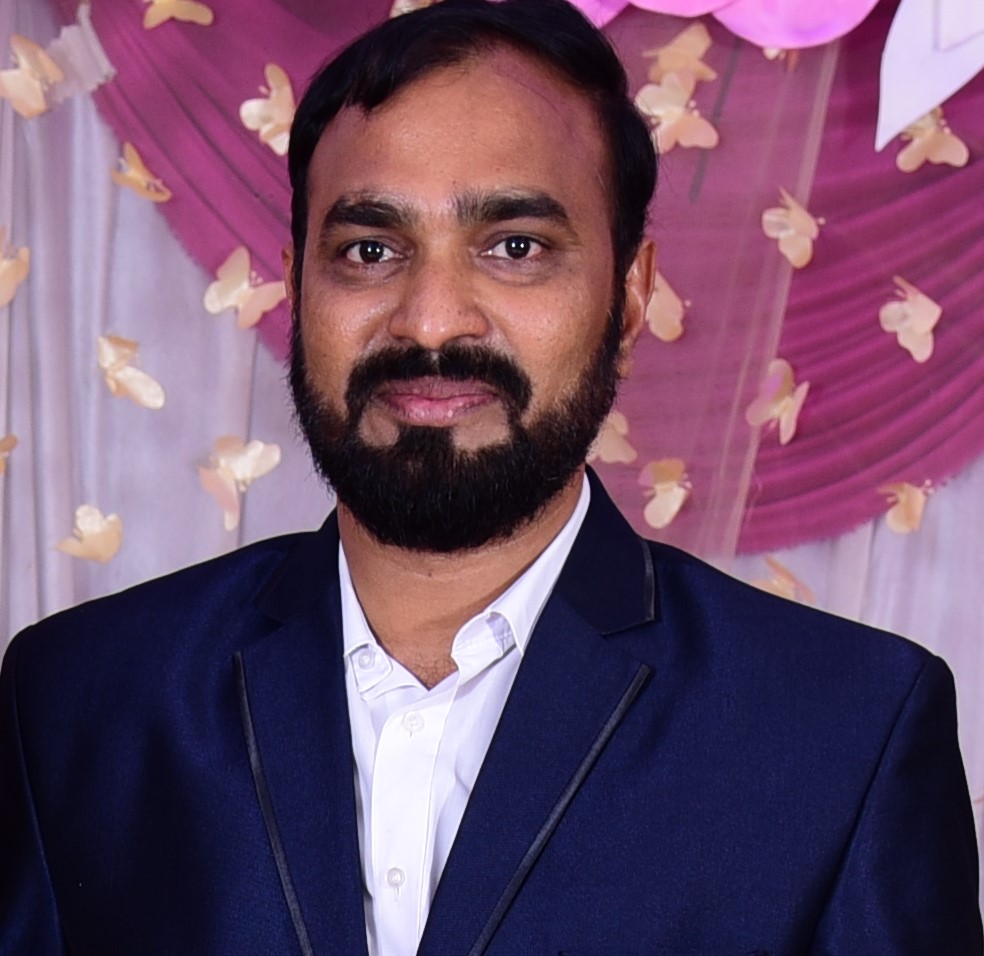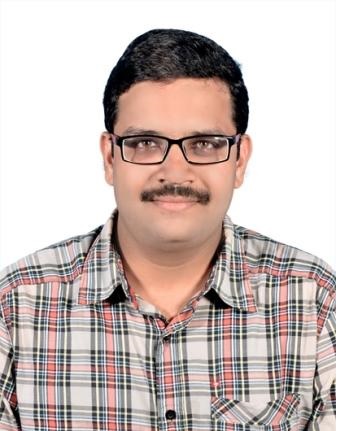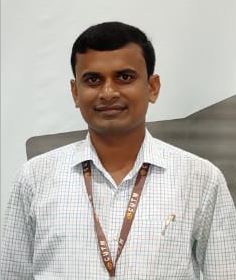Principles of Wireless Communications
Course Attendees
Still no participant
Course Reviews
Still no reviews
Course Name : Principles of Wireless Communication
Code(Credit) : CUTM1047(2-1-0)
Course Objectives
• To study the characteristic of wireless channel
• To understand the design of a cellular system
• To study the various digital signaling techniques and multipath mitigation techniques
• To understand the concepts of multiple antenna techniques
.
Learning Outcomes
• Identify and discuss the fundamental operational and design problems of wireless communication systems.
• Apply basic techniques to design radio links and basic communication systems.
• Apply basic mathematical and scientific principles to solve engineering design problems
• Develop abilities to setup experiments and analyse system performance using wireless systems, hardware and software.
.
Course Syllabus
Module 1: Introduction and History of Cellular Communication Systems
Cellular Communication, First to Second Generation (1G to 2G), Third Generation System (3G), Fourth Generation System, (4G), Future Cellular System.
Module 2: Principles of Wireless Communication Theory
How can we represent information into a binary format? How can information be transferred? , How does wireless digital MODEM work? How can high-rate data be delivered reliably? How can many users access simultaneously?
Practice: 1. Describe the location of where you experienced the largest number of Neighbor Base Stations, and how many were there. In addition, describe the PCI, RSSI, RSRP, RSRQ, RSSNR, ASU, and CQI values measured.
Module 3: Wireless Channels
Large scale path loss – Path loss models: Free Space and Two-Ray models -Link Budget design – Small scale fading- Parameters of mobile multipath channels – Time dispersion parameters-Coherence bandwidth – Doppler spread & Coherence time, fading due to Multipath time delay spread – flat fading – frequency selective fading – Fading due to Doppler spread – fast fading – slow fading.
Practice 2: Understanding of Pathloss
Practice 3: Pathloss with Shadowing
Practice 4: Horizontal and Vertical Beam Pattern
Practice 5: Calculation of Boundary Coverage Probability
Module 4: Cellular Architecture
Multiple Access techniques – FDMA, TDMA, CDMA – Capacity calculations–Cellular concept- Frequency reuse – channel assignment- hand off- interference & system capacity Trunking & grade of service – Coverage and capacity improvement.
Practice 6:Frequency Reuse:Co-Channel Cells & Cell Cluster
Practice 7: Handoff
Practice 8: Sectoring
Module 5: Digital Signaling for Fading Channels
Structure of a wireless communication link, Principles of Offset-QPSK, p/4-DQPSK,Minimum Shift Keying, Gaussian Minimum Shift Keying, Error performance in fading channels, OFDM principle – Cyclic prefix, Windowing, PAPR.
Practice 9: Flat Fading
Practice 10: Frequency Selective Fading
Module 6: Multipath Mitigation Techniques
Equalization – Adaptive equalization, linear and Non-Linear equalization, Zero forcing and LMS Algorithms. Diversity – Micro and Macro diversity, Diversity combining techniques, Error probability in fading channels with diversity reception, Rake receiver.
Practice 11:Calculation of SINR including Beam Tilt: Uplink, Downlink
Module 7: Multiple Antenna Techniques
MIMO systems – spatial multiplexing -System model -Pre-coding – Beam forming –transmitter diversity, receiver diversity- Channel state information-capacity in fading and non-fading channels.
Session Plan
Session 1
Introduction and History of Cellular Communication Systems
https://www.coursera.org/learn/wireless-communications/lecture/KpitQ/1-1-cellular-communication
Session 2
First to Second Generation (1G to 2G), Third Generation System (3G).
https://www.coursera.org/learn/wireless-communications/lecture/1us1e/1-2-first-to-second-generation-1g-to-2g
https://www.coursera.org/learn/wireless-communications/lecture/llFM4/1-3-third-generation-system-3g
Session 3
Fourth Generation System, (4G),Future Cellular System.
https://www.coursera.org/learn/wireless-communications/lecture/ZdZ1H/1-4-fourth-generation-system-4g
https://www.coursera.org/learn/wireless-communications/lecture/fVS4a/1-5-future-cellular-system
Session 4
How can we represent information into a binary format?
https://www.coursera.org/learn/wireless-communications/lecture/ViAYT/2-2
Session 5
How can information be transferred?
https://www.coursera.org/learn/wireless-communications/lecture/xWzaF/2-3
Session 6
How does wireless digital MODEM work? How can high-rate data be delivered reliably? How can many users access simultaneously
https://www.coursera.org/learn/wireless-communications/lecture/3V3ag/2-4
https://www.coursera.org/learn/wireless-communications/lecture/3C0vG/2-5
https://www.coursera.org/learn/wireless-communications/lecture/qB277/2-6
.
Session 7
Practice: 1. Describe the location of where you experienced the largest number of Neighbor Base Stations, and how many were there. In addition, describe the PCI, RSSI, RSRP, RSRQ, RSSNR, ASU, and CQI values measured.
Session 8
Large scale path loss – Path loss models:
Free Space and Two-Ray models
https://youtu.be/ePyTZtMI0NQ
https://youtu.be/verHUC3ZBNM
Session 10
Parameters of mobile multipath channels,Time dispersion parameters,Coherence bandwidth – Doppler spread & Coherence time, fading due to Multipath time delay spread,flat fading – frequency selective fading – Fading due to Doppler spread – fast fading – slow fading
https://youtu.be/S9ymSdCR2yg
https://youtu.be/FXVgiIY3zd4
https://youtu.be/yeBwzmMi9M0
Session 11
Practice 2: Understanding of Pathloss
http://fcmcvlab.iitkgp.ac.in/Exp1/exp1_VideoDemo.html
Session 12
Practice 3: Pathloss with Shadowing
http://fcmcvlab.iitkgp.ac.in/Exp2/exp2_VideoDemo.html
Session 13
Practice 4: Horizontal and Vertical Beam Pattern
http://fcmcvlab.iitkgp.ac.in/Exp3/exp3_VideoDemo.html
Session 14
Practice 5: Calculation of Boundary Coverage Probability
http://fcmcvlab.iitkgp.ac.in/Exp4/exp4_VideoDemo.html
Session 17
channel assignment- hand off- interference & system capacity Trunking & grade of service – Coverage and capacity improvement.
https://youtu.be/0xz6blleW-0
Session 18
Practice 6:Frequency Reuse:Co-Channel Cells & Cell CLuster
Session 21
Structure of a wireless communication link, Principles of Offset-QPSK, p/4-DQPSK
https://youtu.be/KymIDyQiXZI
Session 23
Error performance in fading channels, OFDM principle – Cyclic prefix, Windowing, PAPR
https://youtu.be/KCHO7zlU25Q
https://youtu.be/29_gxmdHeFw
Session 25
Practice 10: Frequency Selective Fading
http://fcmcvlab.iitkgp.ac.in/Exp10/exp10_VideoDemo.html
Session 26
Equalization – Adaptive equalization, linear and Non-Linear equalization
https://youtu.be/DKdpOLh78SU
Session 28
Diversity – Micro and Macro diversity, Diversity combining techniques,
Error probability in fading channels with diversity reception
https://youtu.be/MgUgq62LIMo
https://youtu.be/ofS63_glo68
.
Session 30
Practice 11:Calculation of SINR including Beam Tilt: Uplink, Downlink
http://fcmcvlab.iitkgp.ac.in/Exp5/exp5_VideoDemo.html
Session 31
MIMO systems – spatial multiplexing -System model -Pre-coding .
https://youtu.be/hIl4ZQb-A70
Session 33
Channel state information-capacity in fading and non-fading
channels
https://youtu.be/gLgJ1OhPgrA
Our Main Teachers

Dr Murali M, Working as a Professor in the Department of ECE, School of Engineering , Centurion University , Andhra Pradesh. He did his PhD from Andhra University , M.E in Control Systems, Andhra University College of Engineering, B.Tech in Electronics and Communication Engg, Siddartha Engineering College, Vijayawada. He had 20 years of teaching and research experience and discharged his duties at various manager levels such as Head of the department and also as Principal for an Engineering college.He organized and participated in several national International Technical conferences,He presented and published 20 International and 8 National research papers, presently guiding 4 PhD scholars and his research area of interest includes advanced antennas design for radar and satellite communication , wireless communications and networks.

Prabhat K. Patnaik
Asst. Professor in School of Engineering and Technology Department of ECE
VIEW PROFILEPrabhat K. Patnaik received a M.Tech. from Berhampur University in 2012 and B.Tech from Biju Patnaik University of Technology and Management in 2007.Presently he is working as Asst. Professor in Electronics and Communication Engineering Department at Centurion University of Technology and Management, Odisha, India. He has published 10 research articles. His current research includes digital […]

I received my M. Tech degree in 2015 from IIT, Kharagpur and PhD degree from Deakin University, Australia in 2021. Now, I am working as a Professor and HOD in the Departmentof Electronics and Communication Engineering, SoET, Bhubaneswar campus, CUTM. Research Interests: Wireless Energy Harvesting System. Metamaterial Study. Printed Microstrip Antenna Design. Transceiver […]
Dr. K. Ramya working as an Assistant Professor in the Department of Electronics and Communication Engineering at Centurion University of Technology and Management, Andhra Pradesh has 6.6 years of teaching experience. She received her M.E degree in the specialization of VLSI technology & Embedded Systems from Vasavi College of Engineering Hyderabad and B,Tech degree in […]

